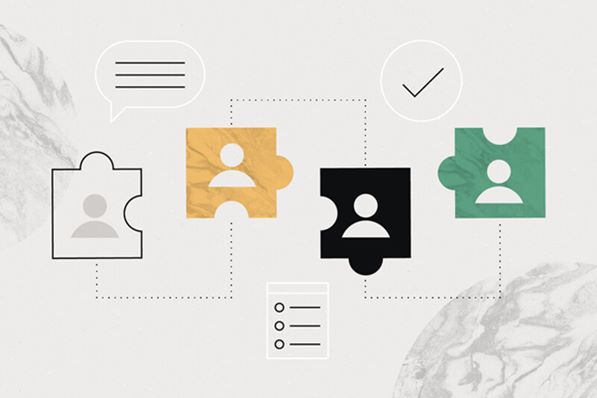
The onboarding process is an integral component of the new hire’s experience since it establishes the foundation for the future and the working relationship between you and the employee. HR professionals must successfully communicate the company’s values, culture, mission statement, and organizational structure to new hires and to their usual duties.
Developing a robust employee onboarding process has several intrinsic advantages, including greater employee engagement and productivity, lower rates of employee attrition, and fewer errors made on the job.
The value of a robust onboarding process for integrating new hires into the company is hard to overstate. It serves as a potential employee’s introduction to the values and norms that guide daily operations at your company. An excellent onboarding process speaks volumes about your business. Successful onboarding will give your new workers a sense of purpose and motivate them to hit the ground running.
Despite the apparent significance of providing a brilliant, successful onboarding experience for new employees via transcription—there is still work to be done on the part of organizations—almost 39% of companies don’t have a formal onboarding procedure. A survey of HR executives from businesses of varying sizes and sectors throughout the US revealed that 76% of businesses aren’t making enough use of onboarding techniques.
The use of transcription in the onboarding process is a great approach to ensure that all new employees get the same information. Transcription is used to ease the onboarding process for new and current workers while providing a positive first impression to new team members.
In this article, we will walk you through what employee onboarding is and how to simplify your employees’ onboarding process through transcription.

Understanding employee onboarding
Onboarding is the process of providing newly recruited employees with the resources and information they need to succeed in their new roles and within the organization. In other words, the onboarding process is when newly hired employees get the training they need to perform well in their position.
During onboarding, the employee will be introduced to the team, briefed on the company’s culture, and given an overview of the position they have been hired for—among many other tasks. A new employee’s onboarding experience should also provide insight into the company’s core values and methods of doing business. The process of onboarding is the opportunity to demonstrate that your company is a place where new employees have the opportunity to advance their careers and progress in their roles.
Onboarding lasts from one day to several months—depending on the employer. Professionals in human resources, however, agree that three months is the average time it takes for a new employee to become wholly integrated into the company. How long it takes for a recruit to become fully productive relies on several factors, including the position’s challenges, the individual’s learning curve, and the effectiveness of the organization’s onboarding.
You must ensure that every new employee is onboarded in the same manner by documenting all of your company’s processes, rules, and procedures. Your organization must establish a standard operating procedure for onboarding new workers—the process will likely move more efficiently.

Significance of onboarding
Onboarding is crucial for making a positive first and lasting impression on new hires, even more so than the hiring process itself. It’s the initial point of contact between a potential new employee and your company before the hiring process officially begins. Maintaining a confident demeanor will set a better tone for the interview and reasonable expectations for their performance on the job. It’s a great way to bring new hires up to speed on the company’s inner workings and establish a positive foundation for future collaboration.
New hires sometimes feel hostile toward your organization if the onboarding process is unpleasant. They’ll be looking for new employment even as they begin working. Successful onboarding transforms a prospective candidate into the company’s most valuable asset by fostering a long-lasting and rewarding working relationship. `
But in practice, this is more challenging. It’s important to ask yourself how you’ll kick off the onboarding process and how long it will run if you want to make sure your recruits are appropriately integrated into the company.
How to use transcription to streamline the onboarding process
Human resources specialists have several responsibilities, from recruiting to engaging workers. HR professionals typically need to maintain meticulous records of their communications and meetings.
HR professionals use transcripts for onboarding and meeting purposes since they are convenient and easy to reference. There is a wide variety of transcription uses, but one that simplifies the process for both the employer and the employee is onboarding.

Enhancing onboarding process interactivity using transcription
Transcription streamlines the onboarding process by reducing the paperwork required of new hires and making the process more engaging for everyone involved. The voice to text transcription helps you transform your audio and video into engaging material and offers convenient and comprehensive content for the employees to understand and absorb.
With the help of transcribing, you will create a smooth onboarding process for your new employees, so they quickly feel at ease in their new positions. Transcription is the way that won’t take long at all for your new hires to learn about your organization and their job responsibilities.
Streamlining human resources management
Returning to first-hand accounts is a significant benefit of recording interviews with prospective employees. If the interview is recorded, the interviewers put their full attention on the candidate. Sharing audio recordings is also simple. Transcription simplifies the process and keeps track of what every candidate states, which otherwise is an impossible task.
Human resources professionals get significant help simplifying the process of interviews by transcription that includes:
- Tracking essential details about each applicant
- Avoiding note-taking manually
- Grouping their notes and looking for critical details in them
- Simplifying the summary of the interaction
- Providing access to notes to additional decision-makers who couldn’t attend
- Evaluating and ranking applicants based on the information provided in their transcripts.
- Preserving the details for future reference
- Relying on the text records to support their selection criteria and hiring decisions.
Candidates feel more at ease throughout the interview if they know it is being videotaped and transcribed. However, human resources professionals must follow state regulations while recording interviews for subsequent review.
Using transcription saves onboarding time
It is always a hassle to take notes during a meeting. New hires will easily miss something vital if they lose focus for even a second. Employees save time and ensure a comprehensive record of meeting content by having it transcribed instead of taking notes during the meeting.
Participants who are unavailable for the meeting also read the minutes and catch up on what was discussed. Overall, this method helps people save time by reducing the time spent reviewing the same material again. It is essential to hire meeting transcribing services to concentrate on the meeting’s goals and have a detailed record of the meeting for future reference and storage.
Offering comprehensive information
New hires need time and relevant information to become productive members of the team. Giving them specifics about the tasks they’ll be doing is crucial to their success. Rather than leaving them to figure out the task and your expectations on their own, provide them with all they need to know. Facilitating the new hire’s smooth integration into the team, open lines of information also help maintain consistency and cooperation between you and the employee.
Using transcription to provide clarity and direction will make them more at ease in their work environment, which will help you retain employees for the long haul. Streamlining the information systems throughout the onboarding process help recruits feel more at ease and ensures they access the materials they need to succeed in their roles.
Facilitating retrieving information
Training sessions that include new software, system, or business process, are quite overwhelming for new hires. Transcripts allow listeners to go back over the conversation at their leisure. They will look up the information they need, avoid asking the same questions again, brush up on previously learned material, and ultimately do a better job in their new role—employees of the future benefit from reviewing these recordings.
Considering that many earlier performed face-to-face activities are now done virtually, all of these advantages are very important. The HR department should ensure that online training sessions are recorded adequately with a transcribing service to guarantee that new hires are properly onboarded and existing workers get the training they need without leaving their desks.
Wrapping up
Using transcription as part of your onboarding management system significantly enhances the accuracy and efficiency of your recruits’ onboarding process. If you don’t invest time to properly onboard new hires, you’re increasing the likelihood that they’ll look out for some new job within the first year. To get around this, use transcription to speed up the onboarding process for new employees.
In addition to being cost-effective, transcription software makes the human resources and onboarding processes uniform for all recruits. You could guarantee that all your new hires get the same comprehensive training and instantaneous access to the data that will make their performance.
A successful onboarding program using transcription will make onboarding new employees quick, easy, and dependable. Engaging employees, assimilating recruits into the corporate culture, and retaining them over the long term are essential.
About the Author
 Surya Ranjan Pandita is a content marketer. He is always on the lookout for new optimization strategies and loves to create actionable content.
Surya Ranjan Pandita is a content marketer. He is always on the lookout for new optimization strategies and loves to create actionable content.




